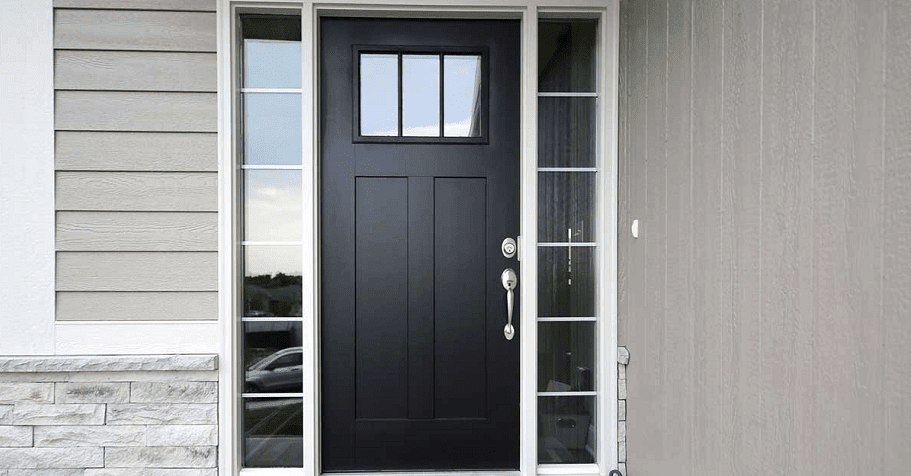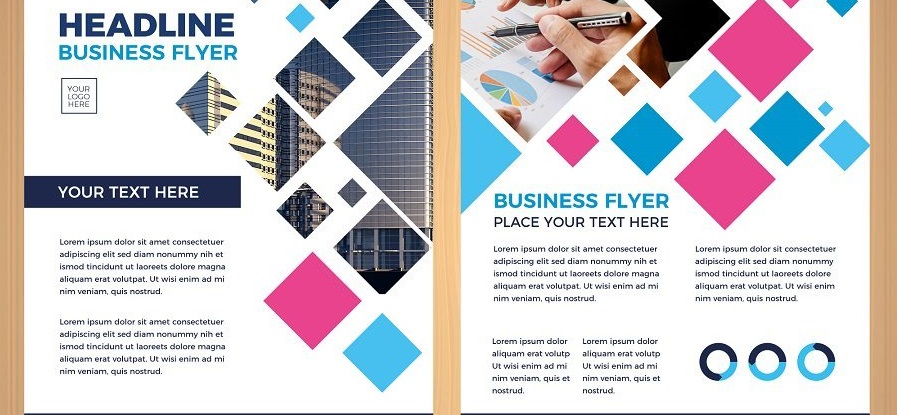Choosing the right front door is essential because your front door is one of the defining factors in creating an excellent first impression for visitors and guests.
But as important as door aesthetics are, the primary purpose of an entry door isn’t just to look good. It’s more about providing reliable safety and security.
With all that in mind, one of the most important questions is which material is suitable for your front or other entry doors.
Many material options are on the market today, including everything from wood to fiberglass to steel and more. Which should you choose?
There are pros and cons to each in terms of performance, aesthetics, up-front cost, and ongoing maintenance needs. Let’s take a closer look at some of your options:
Wood Doors
Wood has always been a popular choice for entry doors, and many still prefer the hardiness and natural aesthetic of real wood.
Wood is also a natural insulator, and solid wood doors do a decent job supporting home energy efficiency. Wood doesn’t dent, and surface scratches are typically not that difficult to sand down and repair.
One of the key downsides to natural wood doors is that they’re typically pretty expensive. Wood is also a high-maintenance material in comparison to other entry door materials; it will have to be stained or painted every few years, and water damage is a constant potential threat.
Steel Doors
Steel doors are another popular choice for many reasons. They account for roughly half of the U.S. entry door market and are also a default choice for most commercial buildings.
What’s so great about steel? For starters, steel is a solid, naturally durable material. It’s also relatively low-maintenance as long as the steel is galvanized correctly and coated, and steel offers some of the best security performance you can get in an exterior door.
Another plus with steel is that it’s also one of the more affordable door materials. Minor dents and dings can typically be corrected, like dents can be pulled out of a car body.
Surface scratches aren’t usually much of an issue, but you do have to be careful with deeper scratches. If left untreated, they can result in unwanted rust formation.
Fiberglass Doors
Fiberglass doors are another well-liked entry door solution. Fiberglass has become the top door replacement material of choice for American homeowners.
Why? Fiberglass has been proven to deliver good security value in an exterior door; breaking through a fiberglass door is more complicated than you might think.
Fiberglass doesn’t warp, shrink, split, or delaminate either, so it’s a solid choice if you’re looking for a genuinely low-maintenance exterior door.
Fiberglass doors are also designed to be incredibly energy-efficient, so that’s another plus if you’re looking for ways to save on your home energy bills.
The one main caveat with fiberglass doors is that they’re more expensive than steel doors and are usually close to the range of wood doors in price.
Glass Doors
Glass features like windows and sidelights are popular features that are included in many exterior door designs. But if you’re looking for a different front door aesthetic, you can also go with a door with glass as its primary construction material.
A full-glass exterior door is a great way to help create a more modern, minimalistic look to your entryway. The central glass can be framed with any material option, including wood, fiberglass, and steel.
And if you go with a triple-pane design made with low-E glass, you can also benefit from solid energy efficiency performance.
The glass can be frosted for privacy if you prefer, and some doors even come with the option to include operable mini-blinds, which are embedded between the glass panes.
Other Door Materials and Applications
If you like the idea of a metal door but aren’t sold on going with steel, you could also choose aluminum as another alternative.
An aluminum entry door can be a good solution with a proper enamel finish and a suitable insulation core. One benefit of aluminum over steel is that it’s naturally rust-free.
Aluminum is softer than steel, so that it can be more prone to dings and dents.
Vinyl is a popular building material for all sorts of purposes – it’s perfect for siding and windows applications, for example.
Not everyone is sold on vinyl as a primary entry door material, though, as vinyl isn’t the most robust material regarding sheer security performance and access protection. Even so, vinyl does work very well for storm doors, screen doors, and patio door applications.
Vinyl is also a good choice for framing solid glass and sliding doors.
Conclusion
So, what’s the best front or entry door material for you? The answer will depend on what you’re looking for in terms of features, security performance, maintenance requirements, and aesthetics.
And obviously, the available budget you have set aside for your door replacement project can be another deciding factor! If you are planning Door replacement, ProVia Doors are The Professional Way to go!
But no matter which entry door style and material you choose, it’s still imperative that your door be appropriately installed.
Most premature door failures aren’t necessarily a product of any issues with the door material itself; the most significant cause of premature door failures is an improper installation, to begin with! Thankfully, if you’re located in N.C. or V.A., you don’t have to take that risk.
Why? Because Skywalker Windows & Siding provides the best exterior door products for any application you can imagine, and they also provide the best professional installation and customer service that’s second to none.
Reach out today, and experience the Skywalker difference for yourself!
Also Read: What To Do When You Want Wall Candle Holders In Your Rooms?

















Add Comment